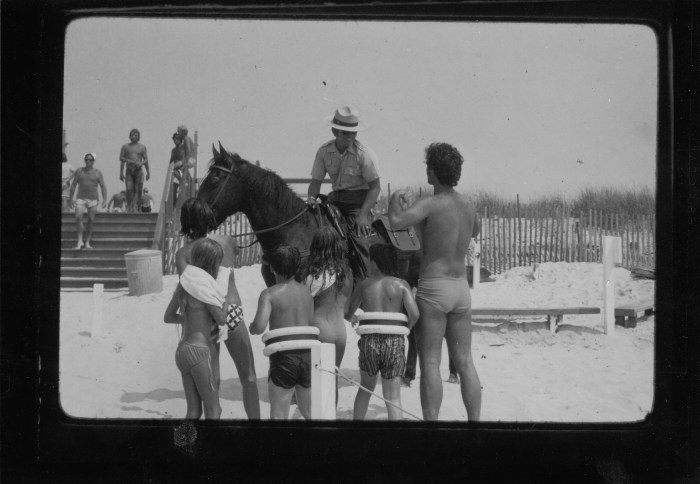Two Fire Island fellows were central to the establishment of the Long Island Power Authority – a state entity that was able to stop the Shoreham nuclear power plant and end the scheme of the now defunct Long Island Lighting Company to build seven to 11 nuclear power plants.
What the late Murray Barbash and Irving Like did was flip the strategy that they used earlier to block the four-lane highway Robert Moses sought to build on Fire Island by pressing for the creation of a Fire Island National Seashore.
Now there’s a possibility of LIPA returning to the original vision of Murray and Irv – operating the electric grid of Long Island (and Fire Island) itself and also being run by a democratically elected board of trustees.
Instead of that, for more than three decades, LIPA has had a private contractor run the electric grid for it. And, after LIPA was formed, two governors of New York State, Mario Cuomo and then George Pataki, cancelled the plan to have LIPA trustees elected to instead have them appointed – most by the governor and also by the State Assembly speaker and the State Senate leader.
Barbash, who died in 2013, was long a committed environmentalist. He built the Dunewood community on Fire Island and with his family had a home there. Like, his brother-in-law, an attorney, who passed away in 2018, also with his family had a home in Dunewood.
I got a phone call from Murray in 1962, the morning after my first article was published in the Babylon Town Leader on the plan of Moses, a Babylon Village resident, for a highway the 32-mile length of Fire Island. My piece described how the four-lane highway would have a devastating impact on communities and nature of Fire Island.
Murray knew there was no way to stop Moses on the state level. Moses, who lost a race for New York governor in 1934 by a then record margin, amassed huge power by heading a bunch of commissions and authorities – becoming as Robert Caro would relate in his Pulitzer Prize-winning book “The Power Broker.”
Needed to stop Moses and his highway was federal power.
Thus, Murray and Irv created the Citizens Committee for a Fire Island National Seashore. And then they and others involved in it, including famed naturalist Robert Cushman Murphy, pushed hard for the Seashore
They received the support of U.S. Interior Secretary Stewart Udall. Shortly before he died in 2010, I chatted with Udall about a visit he made to Fire Island which I covered, and he related how especially impressed he was standing in Sunken Forest and soaking in the beauty. I noted to him how watching and talking to him then, that was obvious.
So, with federal power, Moses was overridden governmentally and President Lyndon Johnson in 1964 signed the legislation creating a Fire Island National Seashore.
Two years later, in 1966, LILCO announced its plan to build the Shoreham nuclear power plant. In the parlance of the nuclear promoters of the time, Long Island would be turned into a “nuclear park.”
The impetus for this nuclear development on Long Island was the fight Con Edison lost when it sought to build a nuclear power plant in Ravenswood, Queens, in the geographic center of New York City. Key to blocking that project: opponents getting a bill introduced in the City Council banning the placement of a nuclear power plant within the boundaries of the city. Con Ed gave up, content with its then ownership of its Indian Point nuclear plants 25 miles north of the city.
Murray and Irv immediately jumped into the battle against nuclear power on Long Island.
But how could it be won considering that the federal agency that approved nuclear plant construction and operation, the then Atomic Energy Commission, consistently approved applications for nuclear plants? The AEC was abolished by Congress in 1974 and replaced by the Nuclear Regulatory Commission, which continued its regulatory “captured agency” record. Indeed, the NRC acronym has through the years often been referred to as Nuclear Rubberstamp Commission.
When commercial nuclear power development began in the U.S., nuclear promoters got the federal government to pre-empt most local and state controls. But Irv knew that a local or state government’s power of eminent domain still existed.
There were other ways in which the Shoreham plant and soon thereafter LILCO’s drive to build four more nuclear plants in Jamesport were opposed. For several years, a strategy used by Suffolk County government was to maintain that evacuation on Long Island would be impossible in the event of a major nuclear plant accident and thus refusing to cooperate in federally-required evacuation planning or implementation. But LILCO was able to get around that by having the White House issue an executive order enabling a “Local Emergency Response Organization” that LILCO formed to substitute for local or state government in planning for and handling an evacuation.
There was a demonstration in 1979 of 15,000 people at the Shoreham site in which 500 were arrested. It was the biggest demonstration ever on Long Island.
But grassroots and Suffolk County government opposition was, in the end, not what stopped Shoreham and LILCO’s plans for other nuclear power plants.
It was the vision of Irv and Murray to flip the Fire Island highway strategy and use state power – its power of eminent domain (commonly used to condemn land that an owner will not sell, for example) – to stop Shoreham and the other nuclear plants LILCO wanted to build.
A model for Citizens to Replace LILCO was the Sacramento Municipal Utility District (SMUD), in an area of California that also had a nuclear power plant that was shut down. SMUD, with an emphasis on green energy, had – and has – an elected board of trustees.
For Long Island, LIPA was created by an act of the New York State Legislature signed by Governor Mario Cuomo in 1986. LIPA would have the power – through eminent domain – to acquire the electric transmission and distribution system of LILCO.
I wrote a book on all this, “Power Crazy,” published by Grove Press, with an introduction by Richard Kessel, who from being the executive director of the New York State Consumer Protection Board became the head of LIPA. But the book came out in 1986.
What came later – the hiring of a private company, now PSEG, a Newark, New Jersey-based firm, to operate the electric grid instead of LIPA and the moves by Governors Cuomo and Pataki not to have an elected a LIPA board, the way SMUD and many public power entities in the United States run – thus was not covered in the book.
But now what later happened can be changed. Last year, the New York State Legislative Commission on the Future of the Long Island Power Authority was created and has been conducting research and holding public hearings on LIPA returning to the way it was supposed to be when two Fire Island guys and their Citizens to Replace LILCO envisioned public power here.































